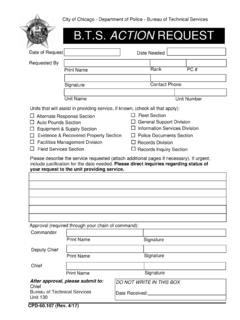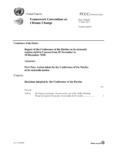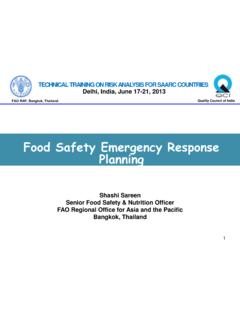Transcription of Myrtle Rust in Australia - apbsf.org.au
1 DRAFTPLANTCRC biosecurityMyrtle Rust in Australia A draft action PlanMay 2018 DRAFTA cknowledgementsThis draft Plan has been prepared by Bob Makinson (Australian Network for Plant Conservation), with input from staff at the Plant Biosecurity Cooperative Research Centre and the Australian Government Department of the Environment and would like to thank the numerous individuals and organisations who provided valuable input to the draft Plan and the prioritisation of the actions at a workshop in December 2017. We would also like to thank the peer reviewers who provided expert feedback on the draft Plan.
2 Cite asMakinson RO (2018) Myrtle Rust in Australia a draft action Plan, presented at the Plant Biosecurity Cooperative Research Centre s National Science Exchange, Melbourne, 31 May draft is open for consultation until 31 August 2018. It is available online at: your feedback to: The Plant Biosecurity CRC is established and supported under the Australian Government Cooperative Research Centres cover: (Clockwise from top) Spotted Gum (Corymbia maculata) infected with Myrtle Rust in glasshouse screening program, Geoff Pegg, Rhodamnia rubescens with Myrtle Rust, Angus Carnegie, Melaleuca quinquenervia with Myrtle Rust, Geoff PeggBack cover: Photo.
3 PBCRCD esigned byBeckon Designs Rust in Australia a draft action Plan | 3 Executive SummaryMyrtle Rust, a plant disease caused by the introduced fungal pathogen Austropuccinia psidii, poses a serious and urgent threat to Australia s native biodiversity. Myrtle Rust affects plant species in the family Myrtaceae (paperbarks, tea-trees, eucalypts, and lillipillies), which are key and often dominant species in many Australian ecosystems. To date it has proved capable of infecting 358 native species and this number is likely to grow.
4 Serious declines towards extinction are underway in some species, and broader ecological consequences are expected. Myrtle Rust is likely to have a significant impact on matters of national environmental significance protected under national environment law, including listed threatened species and ecological communities, wetlands of international importance, world heritage properties, and national heritage industry and biosecurity agencies provided valuable leadership when the pathogen arrived in Australia in 2010, and have supported some important research since.
5 There is however no nationally coordinated response strategy for the environmental dimensions of this threat. There is an urgent need to establish this response and conduct the necessary research and conservation actions, hence the development of this draft action Plan. Time is very short for some species that are severely impacted by Myrtle Rust, but there are meaningful conservation actions that can be taken. The Myrtle Rust pathogen is included in the Key Threatening Process Novel biota and their impact on biodiversity listed in 2013 under the Australian Government s Environment Protection and Biodiversity Conservation Act 1999.
6 This Key Threatening Process applies to introduced and invasive species that have a significant detrimental impact on the environment. The associated non-statutory Threat Abatement Guidelines provide general recommendations for environmental responses to exotic invasive biota. Many are relevant for a coordinated environmental response to Myrtle Rust, and are consistent with recommendations in this action Plan. Some features of this pathogen require management approaches that go beyond those general vigorous environmental response to Myrtle Rust will raise awareness and preparedness for future environmental pathogen threats.
7 It will also assist a stronger national emphasis on environmental biosecurity as recommended in the review of the Intergovernmental Agreement on Biosecurity (Craik, W, Palmer, D & Sheldrake, R 2017, Priorities for Australia s biosecurity system). Overarching GoalsThis draft action Plan provides the foundation for a coordinated national environmental response to Myrtle Rust research and on-ground actions. Its goals are to minimise declines and extinctions of native species due to Myrtle Rust and to mitigate the decline in the integrity and function of their host this action PlanThis draft action Plan has been developed in partnership by the Plant Biosecurity Cooperative Research Centre and the Australian Government s National Environmental Science Program.
8 The Plan draws on information gathered for Myrtle Rust reviewed: the impacts of the invasive plant pathogen Austropuccinia psidii on the Australian environment (Makinson 2018), which provides supporting Plan proposes actions under two overarching recommendations and five themes as follows:OVERARCHING RECOMMENDATION 1 Establish momentum, funding and leadership for a coordinated national environmental response to Myrtle RustTheme 1: Enabling the responseTheme 2: Awareness and engagementOVERARCHING RECOMMENDATION 2 Adopt a coordinated and long-term national environmental response to Myrtle RustTheme 3: Impact assessmentTheme 4: Towards recoveryTheme 5: BiosecurityThe actions recommended in the Plan have been developed and prioritised through consultation with Myrtle Rust and plant ecology experts and stakeholders, with a focus on the highest priority actions required in the next 3-5 years.
9 This draft action Plan is a living document open for public consultation. You can email your feedback to | Myrtle Rust in Australia a draft action PlanDRAFTOVERARCHING RECOMMENDATION 1 Establish momentum, funding and leadership for a coordinated national environmental response to Myrtle RustTHEME 1: ENABLING THE RESPONSEO bjective : Establish and resource leadershipAction : Establish and resource an Interim Steering Committee HIGH priority, Year 1An effective and coordinated response to the environmental threat posed by Myrtle Rust requires leadership from across government environmental agencies.
10 It requires a whole-of-government commitment to enable coordination with, and expertise to be drawn from, other agencies. It also requires consistent outreach to all stakeholders. Arrangements will undoubtedly evolve as a response takes shape. An essential first step is the establishment of an interim coordination body with lines of reporting and liaison with government environment agencies, and with involvement of key non-government : Establish a collaborative responseAction : Secure engagement and commitment from key stakeholders to the response HIGH priority, ongoingAn effective response to the environmental threat posed by Myrtle Rust requires engagement and commitment of expertise by key stakeholders.






